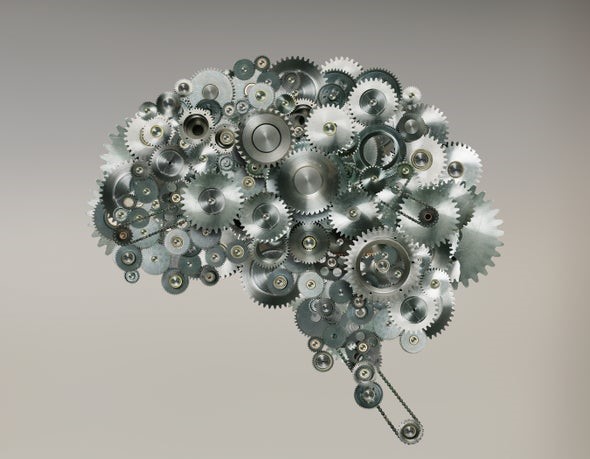How Can We Trust AI If We Don’t Know How It Works
Trust is built on social norms and basic predictability. AI is typically not designed with either
There are alien minds among us. Not the little green men of science fiction, but the alien minds that power the facial recognition in your smartphone, determine your creditworthiness and write poetry and computer code. These alien minds are artificial intelligence systems, the ghost in the machine that you encounter daily.

Figure 1. Efforts to create ultrafast light pulses win 2023 physics Nobel
How Can We Trust AI If We Don’t Know How It Works is shown in figure 1. But AI systems have a significant limitation: Many of their inner workings are impenetrable, making them fundamentally unexplainable and unpredictable. Furthermore, constructing AI systems that behave in ways that people expect is a significant challenge.
If you fundamentally don’t understand something as unpredictable as AI, how can you trust it?
Why AI is unpredictable
Trust is grounded in predictability. It depends on your ability to anticipate the behavior of others. If you trust someone and they don’t do what you expect, then your perception of their trustworthiness diminishes.
Many AI systems are built on deep learning neural networks, which in some ways emulate the human brain. These networks contain interconnected “neurons” with variables or “parameters” that affect the strength of connections between the neurons. As a naïve network is presented with training data, it “learns” how to classify the data by adjusting these parameters. In this way, the AI system learns to classify data it hasn’t seen before. It doesn’t memorize what each data point is, but instead predicts what a data point might be.
Many of the most powerful AI systems contain trillions of parameters. Because of this, the reasons AI systems make the decisions that they do are often opaque. This is the AI explainability problem – the impenetrable black box of AI decision-making.
Consider a variation of the “Trolley Problem.” Imagine that you are a passenger in a self-driving vehicle, controlled by an AI. A small child runs into the road, and the AI must now decide: run over the child or swerve and crash, potentially injuring its passengers. This choice would be difficult for a human to make, but a human has the benefit of being able to explain their decision. Their rationalization – shaped by ethical norms, the perceptions of others and expected behavior – supports trust.
In contrast, an AI can’t rationalize its decision-making. You can’t look under the hood of the self-driving vehicle at its trillions of parameters to explain why it made the decision that it did. AI fails the predictive requirement for trust.
AI behavior and human expectations
Trust relies not only on predictability, but also on normative or ethical motivations. You typically expect people to act not only as you assume they will, but also as they should. Human values are influenced by common experience, and moral reasoning is a dynamic process, shaped by ethical standards and others’ perceptions.
Unlike humans, AI doesn’t adjust its behavior based on how it is perceived by others or by adhering to ethical norms. AI’s internal representation of the world is largely static, set by its training data. Its decision-making process is grounded in an unchanging model of the world, unfazed by the dynamic, nuanced social interactions constantly influencing human behavior. Researchers are working on programming AI to include ethics, but that’s proving challenging.[1]
What does it take to trust AI?
To trust a technology, you need evidence that it works in all kinds of conditions, and that it is accurate. "We live in a society that functions based on a high degree of trust. We have a lot of systems that require trustworthiness, and most of them we don't even think about day to day," says Caltech professor Yisong Yue. "We already have ways of ensuring trustworthiness in food products and medicine, for example. I don't think AI is so unique that you have to reinvent everything. AI is new and fresh and different, but there are a lot of common best practices that we can start from."
Today, many products come with safety guarantees, from children's car seats to batteries. But how are such guarantees established? In the case of AI, engineers can use mathematical proofs to provide assurance. For example, the AI that a drone uses to direct its landing could be mathematically proven to result in a stable landing.
This kind of guarantee is hard to provide for something like a self-driving car because roads are full of people and obstacles whose behavior may be difficult to predict. Ensuring the AI system's responses and "decisions" are safe in any given situation is complex.
One feature of AI systems that engineers test mathematically is their robustness: how the AI models react to noise, or imperfections, in the data they collect. "If you need to trust these AI models, they cannot be brittle. Meaning, adding small amounts of noise should not be able to throw off the decision making," says Anima Anandkumar, Bren Professor of Computing and Mathematical Sciences at Caltech.
"A tiny amount of noise—for example, something in an image that is imperceptible to the human eye—can throw off the decision making of current AI systems." For example, researchers have engineered small imperfections in an image of a stop sign that led the AI to recognize it as a speed limit sign instead. Of course, it would be dangerous for AI in a self-driving car to make this error.
When AI is used in social situations, such as the criminal justice or banking systems, different types of guarantees, including fairness, are considered. [2]
Reference:
- https://www.scientificamerican.com/article/how-can-we-trust-ai-if-we-dont-know-how-it-works/
- https://scienceexchange.caltech.edu/topics/artificial-intelligence-research/trustworthy-ai
Cite this article:
Gokula Nandhini K (2023), How Can We Trust AI If We Don’t Know How It Works, AnaTtechmaz, pp.754

